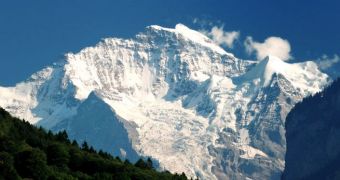Scientists at the Ohio State University (OSU) say that preliminary results of an investigation they conducted atop the eastern European Alps hint at the fact that some of the glaciers in the area hold back climate data spanning more than a thousand years.
The research was conducted on the highest mountain in the eastern sector of the Alps. The goal was to discover a way of analyzing the influences that climate change had on the area over this time frame.
Scientists are currently in a hurry to do so, as these particular glaciers, like most others in the world, is melting at a high pace. With it, all the climate data it contains may soon disappear for ever.
As of late, the effects of global warming are felt more and more at these high altitudes, and ices melt a lot faster as a result. This increases the risks of both drought and floods downstream.
A new study detailing the OSU investigation is published in the latest issue of the esteemed Journal of Glaciology. It paints a bleak picture of the glacier Alto dell’Ortles, which is located at an altitude of 12,812 feet (3,905 meters) above sea level.
Experts believe that only 10 percent of its innards may contain viable climate data, and say that this result is not encouraging at all, considering that the glacier has a surface of only 0.4 square miles (1.04 square kilometers).
“This is a mountain that is very difficult to climb and that has probably prevented researchers and glaciologists from Europe from going up there to study the ice,” says expert Paolo Gabrielli.
“But it is an ideal observatory to have monitored climatic change in the region in the past as well as currently,” adds the scientist, who holds joint appointments at the OSU School of Earth Sciences and the Byrd Polar Research Center.
He explains that this particular glacier is very important because it could help them reconstruct the way the area looked like a thousand years ago. Past ecosystemic and climate changes may all be inscribed in the ices, he adds.
“There is a possibility that we could find ice reaching back 5,000 years, but that’s just speculation until we actually drill,” adds Gabrielli.
“We hope to find out how these three factors [human history, ecosystems and climate] interacted. We’d like to find evidence of whether climate conditions influenced the development of agriculture here, or even the start of primitive mining and smelting operations,” the expert adds.
“We may even be able to see indications in the ice record of when people came to the region,” the OSU scientist conclueds.

 14 DAY TRIAL //
14 DAY TRIAL //